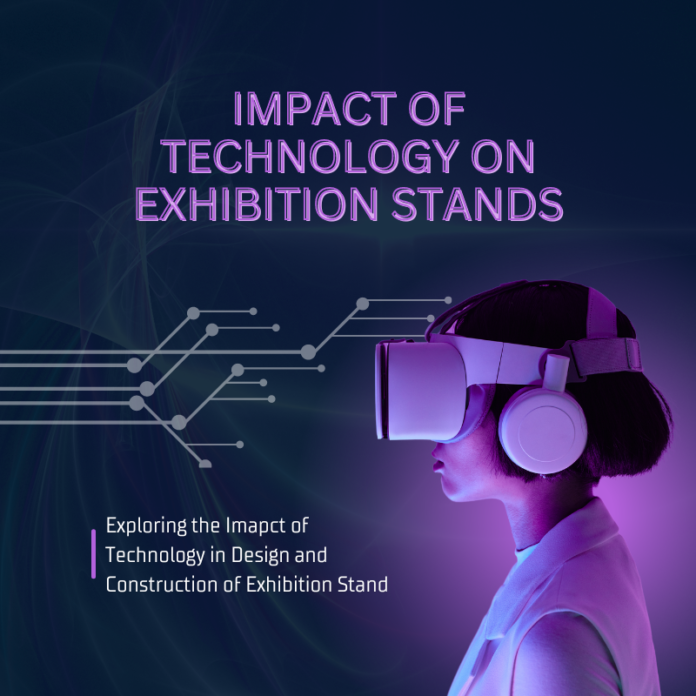The attraction and engagement of visitors can be greatly enhanced by an exquisitely designed stand at trade shows and exhibitions. Over time, technology has completely changed how we think and build exhibition stands. It has greatly affected the impact. The present exhibition’s stand-building landscape has been greatly influenced by technology. It offers everything from sustainable materials to design tools.
In this guide, we will go into greater detail about the significant impact of technology on the exhibition stands in this piece, emphasizing significant developments and their ramifications for both exhibitors and stand builders.
Advancements in Design Tools
Exhibition stand design has historically required a lot of physical prototypes and several sketches, which made the process labor- and time-intensive. Virtual reality (VR) tools and advanced design software have completely changed this process. With the use of sophisticated Computer-Aided Design (CAD) software, stand builders can now produce complex 3D models of their designs with accuracy and complexity.
With the use of these software tools, stand designers may experiment with different layouts. They can investigate original concepts and make changes in real time. This streamlines the process and lowers the possibility of error. Also, virtual reality(VR) and augmented reality (AR) technology give designers the ability to immerse themselves in virtual worlds fully. It offers them a lifelike replica of the last stand’s appearance and feel. This facilitates better communication between designers and clients. Clients are also better able to visualize and refine their ideas, resulting in more coherent and powerful stand designs.
The Integration And Impact Of Technology
Exhibition stands are increasingly integrating interactive technologies to fascinate spectators and promote meaningful interactions in an era where engagement is crucial. These technologies range from touchscreen displays to augmented reality (AR) experiences. It provides booth designs with an interactive element and encourages guests to actively engage with the show’s content.
For instance, interactive product demonstrations using touchscreen from exhibitors let visitors explore features and functionalities at their leisure. In a similar vein, augmented reality apps can superimpose digital data or animations on genuine displays. It gives visitors an engaging and unforgettable experience. By utilizing interactive technology, stand designers can provide personalized and immersive experiences that enhance visitor engagement and leave a lasting impression on the exhibition stands.
Embracing Sustainable Practices
Because of worries about resource depletion and environmental effects, the exhibition business has placed an increasing emphasis on sustainability in recent years. Consequently, to reduce their carbon footprint, stand builders are increasingly using environmentally friendly materials. This move towards sustainability has been made possible in large part by technological improvements. By focusing on ideas like modular architecture, recyclable materials, and energy-efficient lighting systems, becoming more and more common.
For instance, exhibition stand fabricators can now minimize waste and use less virgin resources. Instead, they can use recycled wood, bamboo, or aluminum composite materials. Also, automation and digital technologies have optimized the manufacturing process, cutting waste and raising overall productivity. Exhibition booths can improve their brand image and reputation by adopting sustainable practices to lessen their environmental effect, Also align with the values of socially conscious consumers.
Incorporating Data Analytics
The use of data analytics in exhibition stands is another important way that technology is changing the industry. Exhibitors can obtain important information about visitor behavior, including foot traffic patterns, dwell periods, and engagement levels. They can perform this by utilizing sensors, Radio-Frequency Identification (RFID) technology, and other data-collecting tools. After that, analysts may examine this data to spot patterns, gauge how well-suited various design components are, and provide guidance for the next choices.
For instance, exhibitors can employ heat maps to pinpoint high-traffic locations within their exhibits and carefully place important attractions or marketing materials there. In a similar vein, RFID technology tracks how attendees engage with particular items or exhibits. With this, it offers insightful data on which features most appeal to the intended demographic. Exhibition booths may become more data-driven and sensitive to the demands and preferences of their target audience. This will eventually increase the efficacy and ROI of their presence at trade shows and exhibitions.
In summary, it is impossible to overestimate the influence of technology on the layout and design of show stands. Technology has completely changed the exhibition stand sector, from cutting-edge design tools and interactive technologies to sustainable practices and data analytics. Stand builders can produce immersive and captivating experiences that draw guests in and make an impression by utilizing these technological breakthroughs. The potential for innovation will shape the future of trade shows and exhibits in display stand design, which will grow as technology advances.










